Essam H. Houssein
An Efficient Binary Harris Hawks Optimization based on Quantum SVM for Cancer Classification Tasks
Feb 24, 2022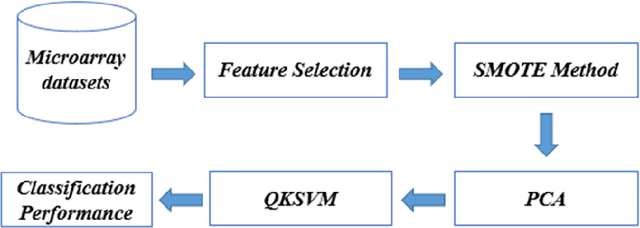
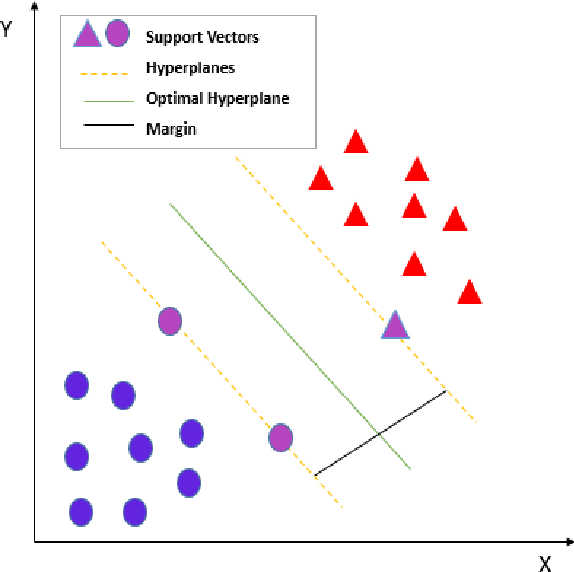

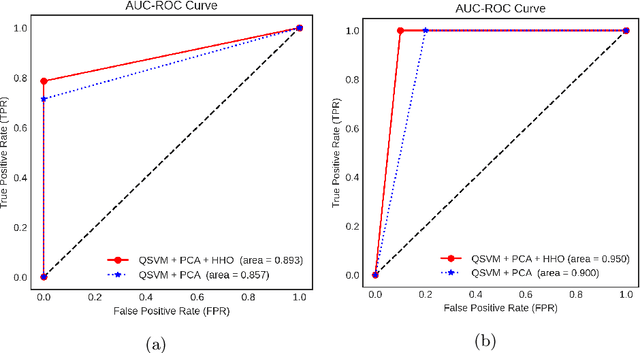
Abstract:Cancer classification based on gene expression increases early diagnosis and recovery, but high-dimensional genes with a small number of samples are a major challenge. This work introduces a new hybrid quantum kernel support vector machine (QKSVM) combined with a Binary Harris hawk optimization (BHHO) based gene selection for cancer classification on a quantum simulator. This study aims to improve the microarray cancer prediction performance with the quantum kernel estimation based on the informative genes by BHHO. The feature selection is a critical step in large-dimensional features, and BHHO is used to select important features. The BHHO mimics the behavior of the cooperative action of Harris hawks in nature. The principal component analysis (PCA) is applied to reduce the selected genes to match the qubit numbers. After which, the quantum computer is used to estimate the kernel with the training data of the reduced genes and generate the quantum kernel matrix. Moreover, the classical computer is used to draw the support vectors based on the quantum kernel matrix. Also, the prediction stage is performed with the classical device. Finally, the proposed approach is applied to colon and breast microarray datasets and evaluated with all genes and the selected genes by BHHO. The proposed approach is found to enhance the overall performance with two datasets. Also, the proposed approach is evaluated with different quantum feature maps (kernels) and classical kernel (RBF).
Hybrid quantum convolutional neural networks model for COVID-19 prediction using chest X-Ray images
Feb 08, 2021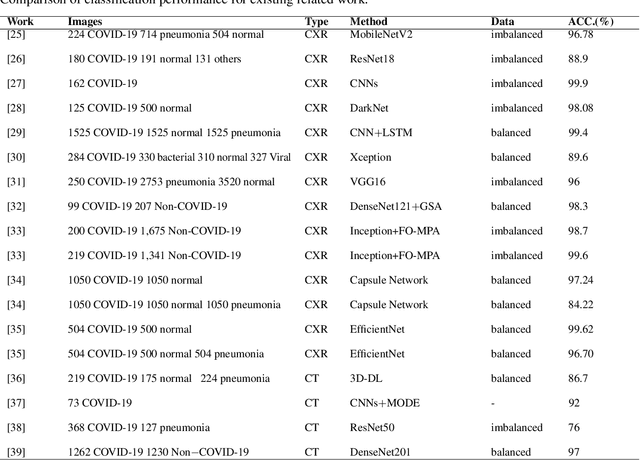
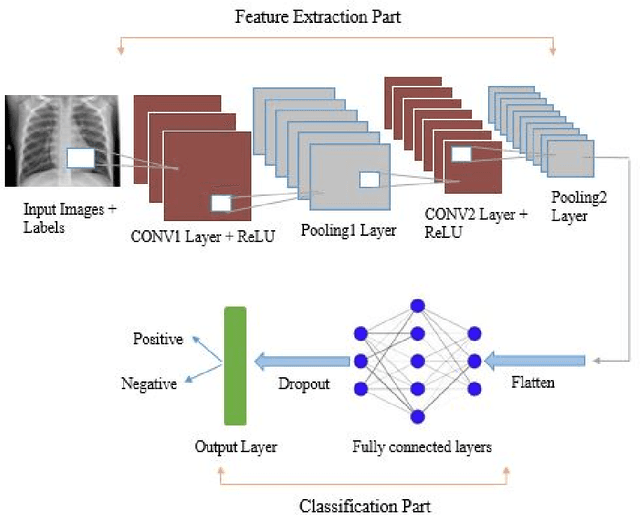
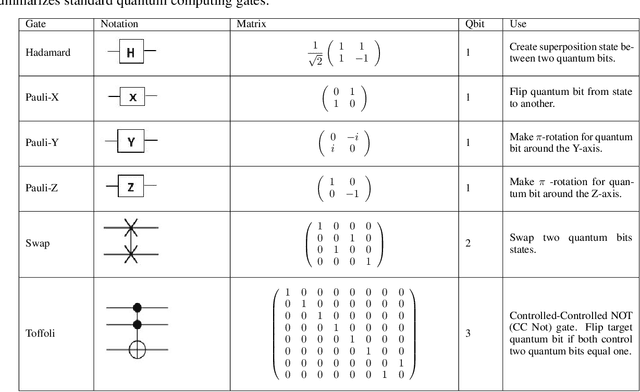
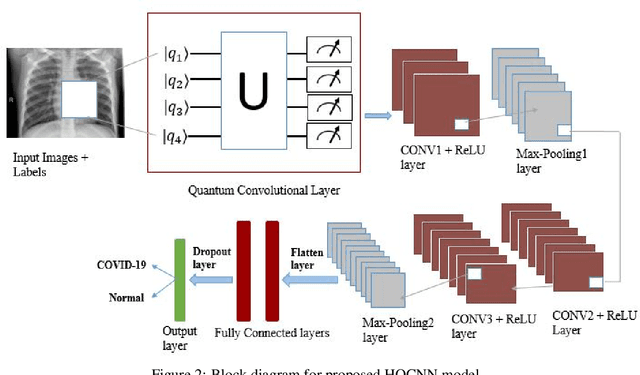
Abstract:Despite the great efforts to find an effective way for COVID-19 prediction, the virus nature and mutation represent a critical challenge to diagnose the covered cases. However, developing a model to predict COVID-19 via Chest X-Ray (CXR) images with accurate performance is necessary to help in early diagnosis. In this paper, a hybrid quantum-classical convolutional Neural Networks (HQCNN) model used the random quantum circuits (RQCs) as a base to detect COVID-19 patients with CXR images. A collection of 6952 CXR images, including 1161 COVID-19, 1575 normal, and 5216 pneumonia images, were used as a dataset in this work. The proposed HQCNN model achieved higher performance with an accuracy of 98.4\% and a sensitivity of 99.3\% on the first dataset cases. Besides, it obtained an accuracy of 99\% and a sensitivity of 99.7\% on the second dataset cases. Also, it achieved accuracy, and sensitivity of 88.6\%, and 88.7\%, respectively, on the third multi-class dataset cases. Furthermore, the HQCNN model outperforms various models in balanced accuracy, precision, F1-measure, and AUC-ROC score. The experimental results are achieved by the proposed model prove its ability in predicting positive COVID-19 cases.
Classification with Quantum Machine Learning: A Survey
Jun 22, 2020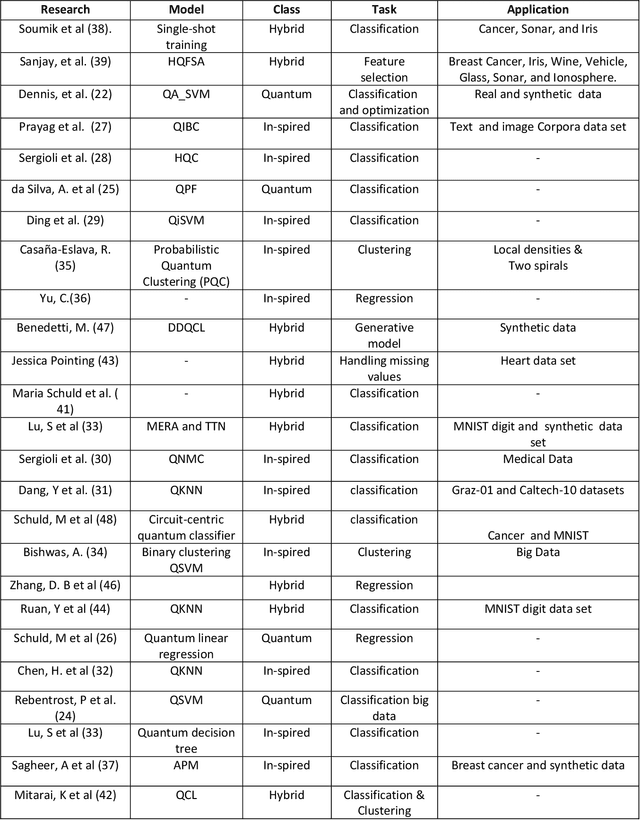
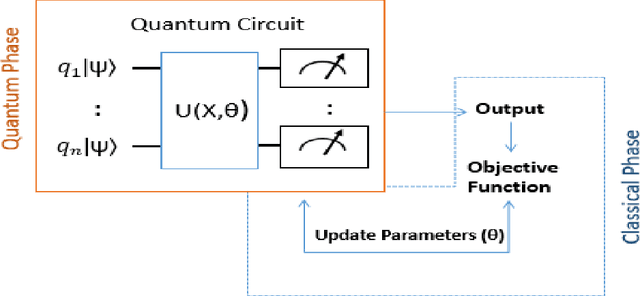
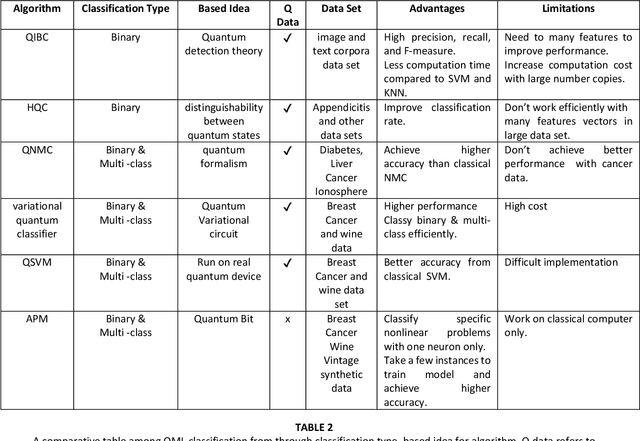
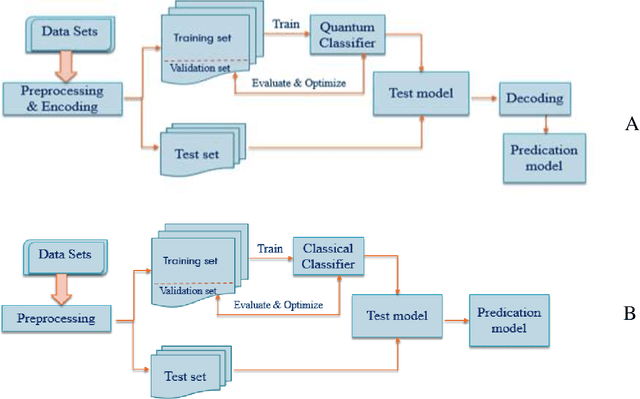
Abstract:Due to the superiority and noteworthy progress of Quantum Computing (QC) in a lot of applications such as cryptography, chemistry, Big data, machine learning, optimization, Internet of Things (IoT), Blockchain, communication, and many more. Fully towards to combine classical machine learning (ML) with Quantum Information Processing (QIP) to build a new field in the quantum world is called Quantum Machine Learning (QML) to solve and improve problems that displayed in classical machine learning (e.g. time and energy consumption, kernel estimation). The aim of this paper presents and summarizes a comprehensive survey of the state-of-the-art advances in Quantum Machine Learning (QML). Especially, recent QML classification works. Also, we cover about 30 publications that are published lately in Quantum Machine Learning (QML). we propose a classification scheme in the quantum world and discuss encoding methods for mapping classical data to quantum data. Then, we provide quantum subroutines and some methods of Quantum Computing (QC) in improving performance and speed up of classical Machine Learning (ML). And also some of QML applications in various fields, challenges, and future vision will be presented.
Parallel Whale Optimization Algorithm for Solving Constrained and Unconstrained Optimization Problems
Jun 21, 2018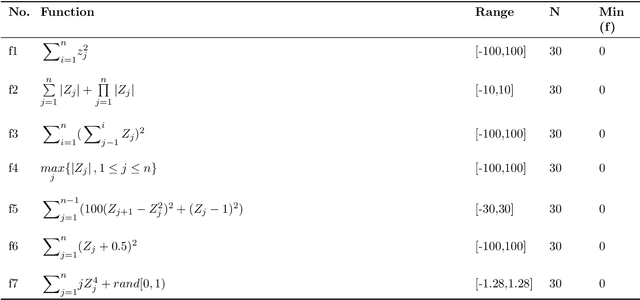
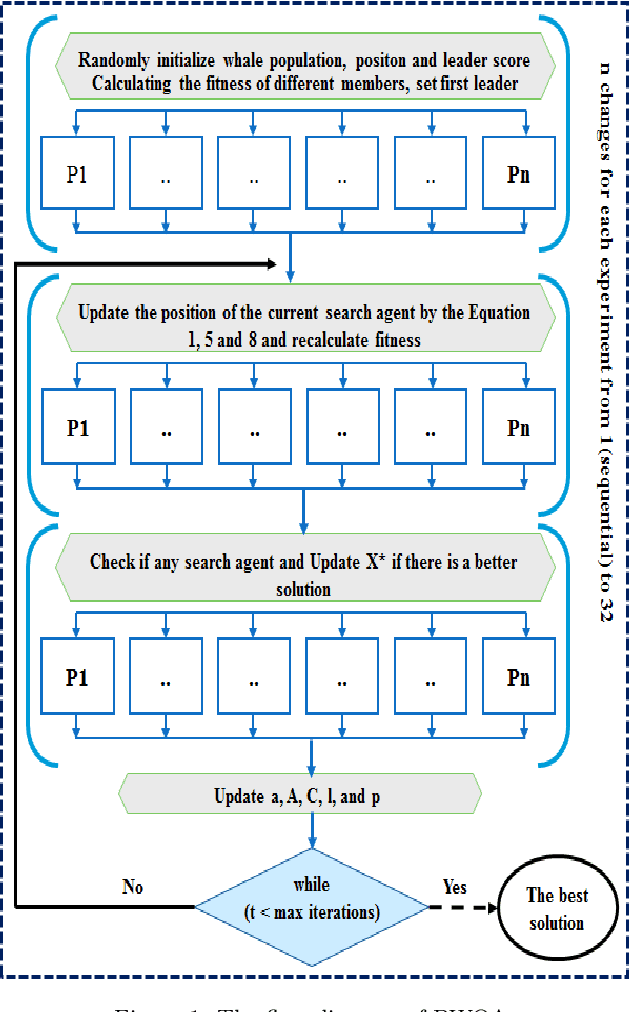
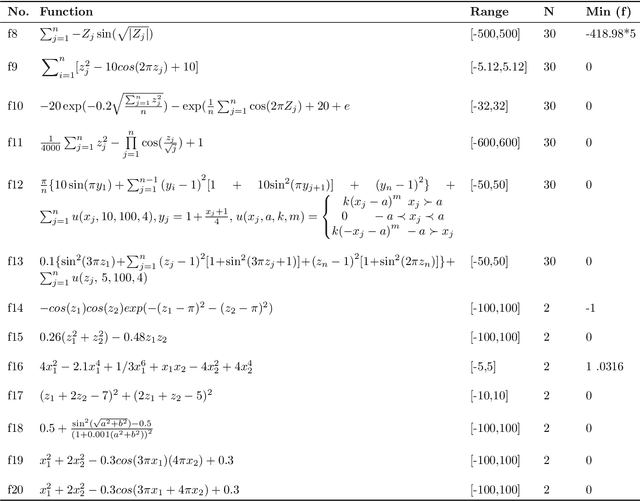
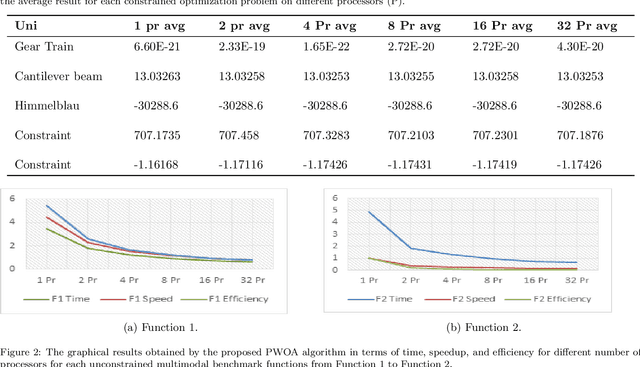
Abstract:Recently the engineering optimization problems require large computational demands and long solution time even on high multi-processors computational devices. In this paper, an OpenMP inspired parallel version of the whale optimization algorithm (PWOA) to obtain enhanced computational throughput and global search capability is presented. It automatically detects the number of available processors and divides the workload among them to accomplish the effective utilization of the available resources. PWOA is applied on twenty unconstrained optimization functions on multiple dimensions and five constrained optimization engineering functions. The proposed parallelism PWOA algorithms performance is evaluated using parallel metrics such as speedup, efficiency. The comparison illustrates that the proposed PWOA algorithm has obtained the same results while exceeding the sequential version in performance. Furthermore, PWOA algorithm in the term of computational time and speed of parallel metric was achieved better results over the sequential processing compared to the standard WOA.
Combining Support Vector Machine and Elephant Herding Optimization for Cardiac Arrhythmias
Jun 20, 2018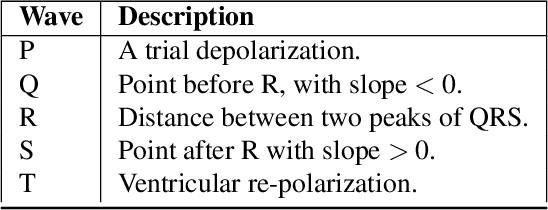
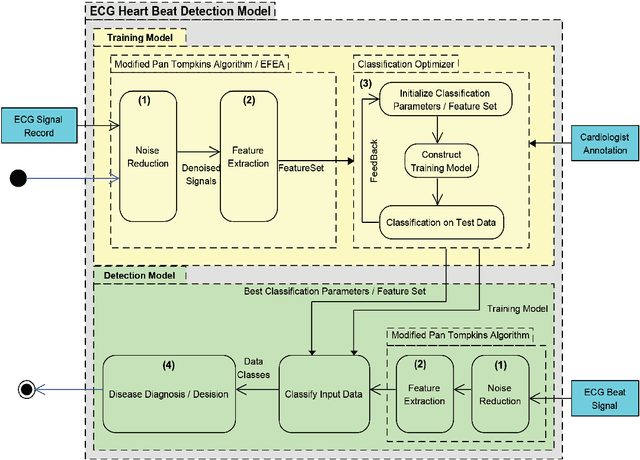

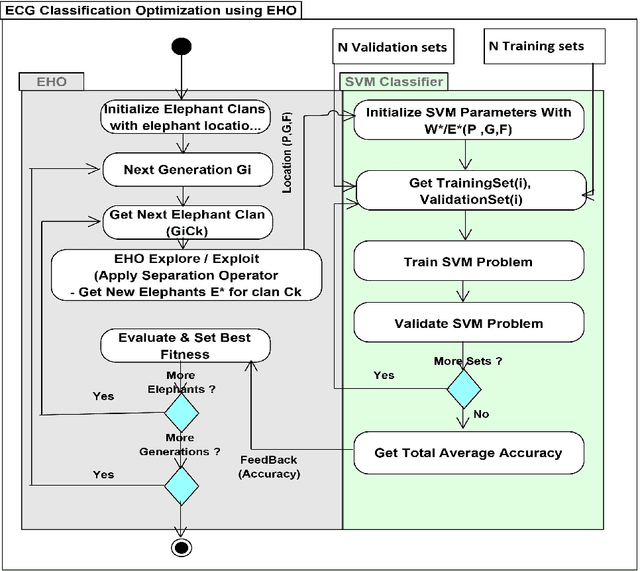
Abstract:Many people are currently suffering from heart diseases that can lead to untimely death. The most common heart abnormality is arrhythmia, which is simply irregular beating of the heart. A prediction system for the early intervention and prevention of heart diseases, including cardiovascular diseases (CDVs) and arrhythmia, is important. This paper introduces the classification of electrocardiogram (ECG) heartbeats into normal or abnormal. The approach is based on the combination of swarm optimization algorithms with a modified PannTompkins algorithm (MPTA) and support vector machines (SVMs). The MPTA was implemented to remove ECG noise, followed by the application of the extended features extraction algorithm (EFEA) for ECG feature extraction. Then, elephant herding optimization (EHO) was used to find a subset of ECG features from a larger feature pool that provided better classification performance than that achieved using the whole set. Finally, SVMs were used for classification. The results show that the EHOSVM approach achieved good classification results in terms of five statistical indices: accuracy, 93.31%; sensitivity, 45.49%; precision, 46.45%; F-measure, 45.48%; and specificity, 45.48%. Furthermore, the results demonstrate a clear improvement in accuracy compared to that of other methods when applied to the MITBIH arrhythmia database.
 Add to Chrome
Add to Chrome Add to Firefox
Add to Firefox Add to Edge
Add to Edge